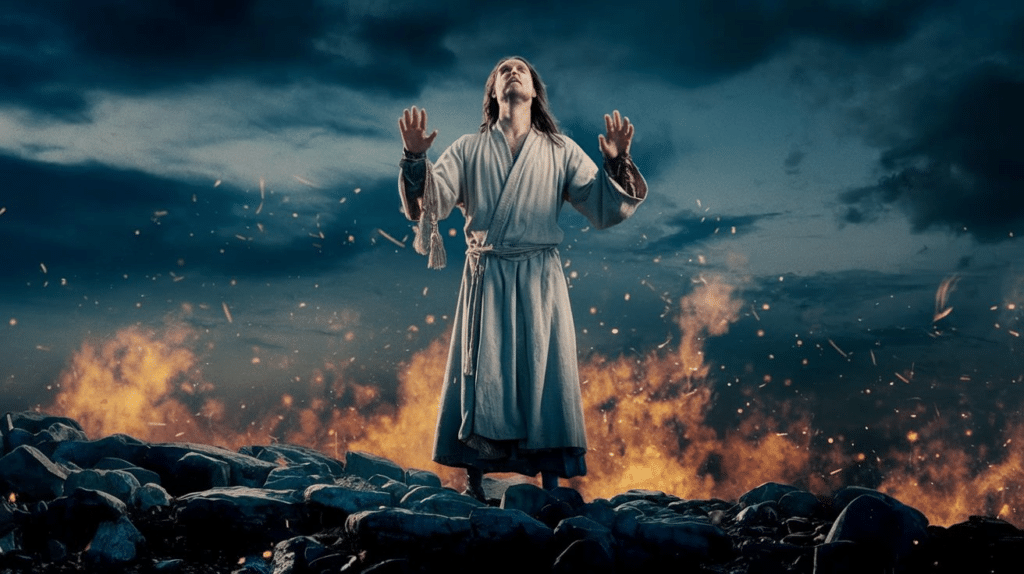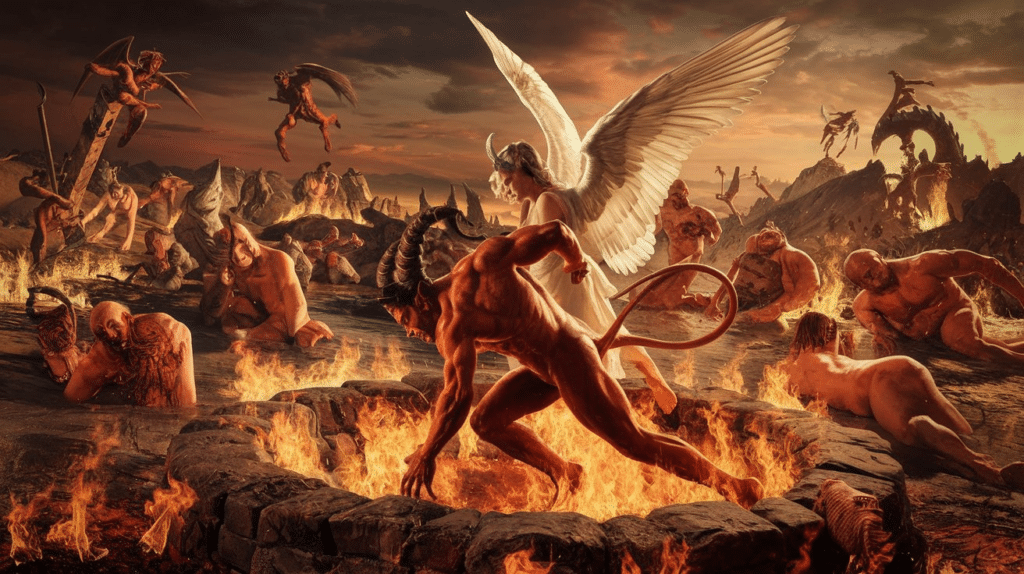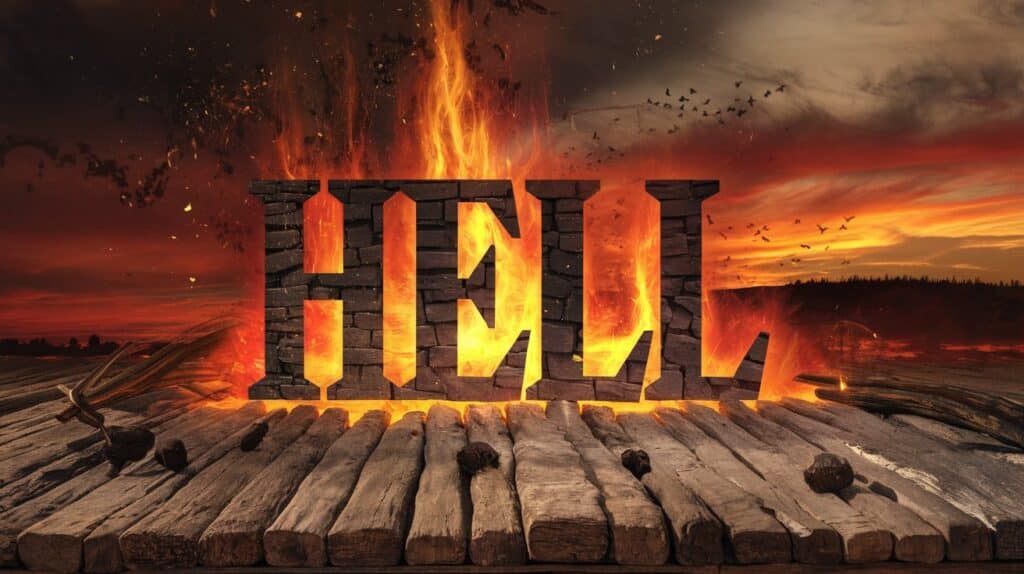Hell is one of the most challenging doctrines in Christian theology, sparking debate across centuries. At the core of this discussion lies the question of eternal punishment and the contrasting views between eternal conscious torment and annihilationism. Hell a doctrine which should be on every page—carries implications beyond theology, influencing how Christians perceive justice, life, and the afterlife. This article explores the biblical doctrine of hell and emphasizes why it should be a central theme in theological discussions and personal reflection.
The Biblical Doctrine of Hell: A Response to Annihilationism
The doctrine of hell a doctrine which should be on every page—is steeped in biblical texts that address eternal punishment, eternal life, and eternal death. Annihilationism, a belief that the wicked will be completely destroyed rather than tormented eternally, presents a significant challenge to traditional teachings on hell. However, many theologians argue that the Bible presents a clear picture of eternal conscious torment for the wicked, often using language that points to eternal fire and eternal punishment.

Key Biblical Passages on Hell
Several passages offer insight into the nature of hell:
- Matthew 25:46 – “And these will go away into eternal punishment, but the righteous into eternal life.”
- Revelation 20:10 – “And the devil who had deceived them was thrown into the lake of fire and sulfur…and they will be tormented day and night forever and ever.”
- 2 Thessalonians 1:9 – “They will suffer the punishment of eternal destruction, away from the presence of the Lord.”
These verses describe a lake of fire and eternal conscious torment, which support the traditional doctrine of hell as a place of unending punishment.
The Biblical Texts
The Bible references hell through varied terms and imagery, painting a picture of both hellfire and a lake of fire where eternal suffering occurs. According to traditional interpretation, this eternal punishment reflects the justice and holiness of God. Here are some significant biblical references:
| Scripture | Description | Keywords |
| Matthew 10:28 | Describes destruction of body and soul | eternal death, eternal fire |
| Mark 9:43-48 | Refers to “unquenchable fire” | eternal torment, hellfire |
| Revelation 21:8 | Speaks of a “second death” in the lake of fire | lake of fire, biblical texts |
The Bible consistently presents hell as a place of conscious torment and eternal fire. This idea stands in stark contrast to annihilationism, which posits that the wicked cease to exist after judgment.
Making Sense of Hell
The doctrine of hell serves several purposes in Christian theology:
- Justice and Retribution: Hell is viewed as the ultimate form of divine justice where unrepentant sin meets its punishment.
- Moral Accountability: The idea of eternal punishment emphasizes the seriousness of sin and the holiness of God.
- Eternal Life Contrast: Hell provides a sharp contrast to eternal life with God, offering a choice between salvation and eternal punishment.
These points underscore why hell is often seen as essential in Christian doctrine—it presents a clear moral choice and reinforces biblical truth.
Theological Debate: Annihilationism vs. Eternal Torment

What is Annihilationism?
Annihilationism holds that the wicked will ultimately be destroyed and cease to exist rather than endure eternal conscious torment. Proponents argue that eternal punishment contradicts the love of God, and they reference passages that speak of eternal death and destruction as evidence.
Eternal Torment in Traditional Theology
The traditional view sees hell as a place of eternal conscious suffering. Scriptures like Matthew 25:46, which contrasts eternal life and eternal punishment, suggest a continuous, conscious state in hell.
| View | Description | Supporting Scriptures |
| Annihilationism | Wicked will be destroyed completely | John 3:16, Romans 6:23 |
| Eternal Torment | Eternal, conscious suffering in hell | Matthew 25:46, Revelation 14:11 |
The annihilationist view of hell challenges the traditional doctrine by arguing for the final destruction rather than unending suffering.
Eternal Fire and Conscious Torment: A Biblical Perspective

The Concept of Eternal Fire
The concept of eternal fire appears in verses like Matthew 18:8, often symbolizing unending punishment. This eternal fire is depicted as a place where sin and wickedness receive their due judgment. The lake of fire in Revelation is described as the second death, where sinners experience eternal death separate from God.
Conscious Torment in the Bible
The phrase conscious torment suggests that hell is not a temporary or unconscious state. Many biblical texts describe the experience of the wicked in hell as one of unending suffering. As seen in passages such as Revelation 20:10 and Mark 9:48.
FAQs
What Are the Doctrines of Hell?
The doctrines of hell vary but typically focus on hell as a place of eternal punishment for the wicked, emphasizing divine justice. Key Christian doctrines include eternal conscious torment, annihilationism (complete destruction of the soul), and universal reconciliation (eventual redemption).
What Are the 4 Views on Hell?
- Eternal Conscious Torment: Belief in eternal suffering for the wicked.
- Annihilationism: The soul is ultimately destroyed rather than eternally tormented.
- Universal Reconciliation: All souls are eventually redeemed.
- Purgatorial View: Souls undergo temporary purification before reaching heaven.
What Are the Criticisms of the Doctrine of Hell?
Critics argue that eternal punishment contradicts a loving God, lacks justice, and can be seen as fear-based. Others believe hell is metaphorical rather than literal, emphasizing moral and spiritual consequences over physical punishment.
What Is the Principle of Hell?
The principle of hell centers on justice and moral accountability. It signifies separation from God due to unrepentant sin and serves as a warning against moral transgressions.
Is Hell a Concept in Islam?
Islam includes the concept of hell (Jahannam), described as a place of punishment for those who reject faith and commit grave sins. It has multiple levels, with varying degrees of punishment.
What Is the Unleash Hell Rule?
The “unleash hell” rule refers to a motivational concept encouraging a bold, intense approach, often in competitive or challenging situations. It is more of a metaphor than a religious principle.
What Is Hell Theory?
Hell theory involves philosophical and theological interpretations of hell’s nature, purpose, and existence, exploring whether it is literal, metaphorical, eternal, or temporary.
What Are the 7 Levels of Hell in Islam?
- Jahannam: The first level, for sinners with hope of eventual redemption.
- Ladhaa: Punishment for those who neglected duty.
- Saqar: For those who denied the truth.
- Al-Jaheem: A deeper level for the arrogant.
- Sa’eer: For those who rejected divine messages.
- Al-Hawiyah: The lowest level, for hypocrites and the worst sinners.
What Is the Hell Yeah Rule?
The “Hell Yeah” rule, coined by entrepreneur Derek Sivers, suggests only pursuing opportunities that genuinely excite you, or saying “no” otherwise. It promotes focus and commitment to things one truly values.

